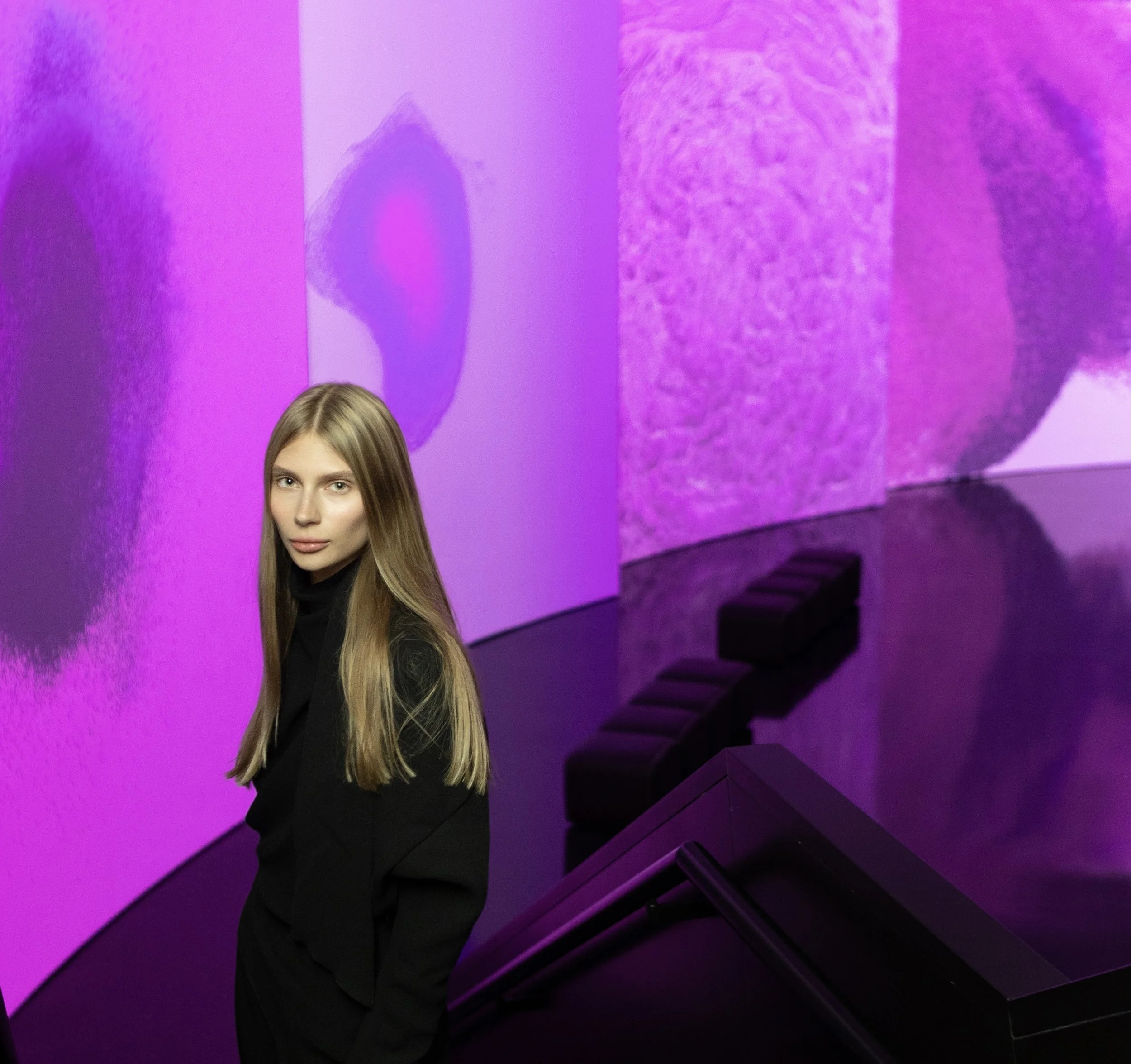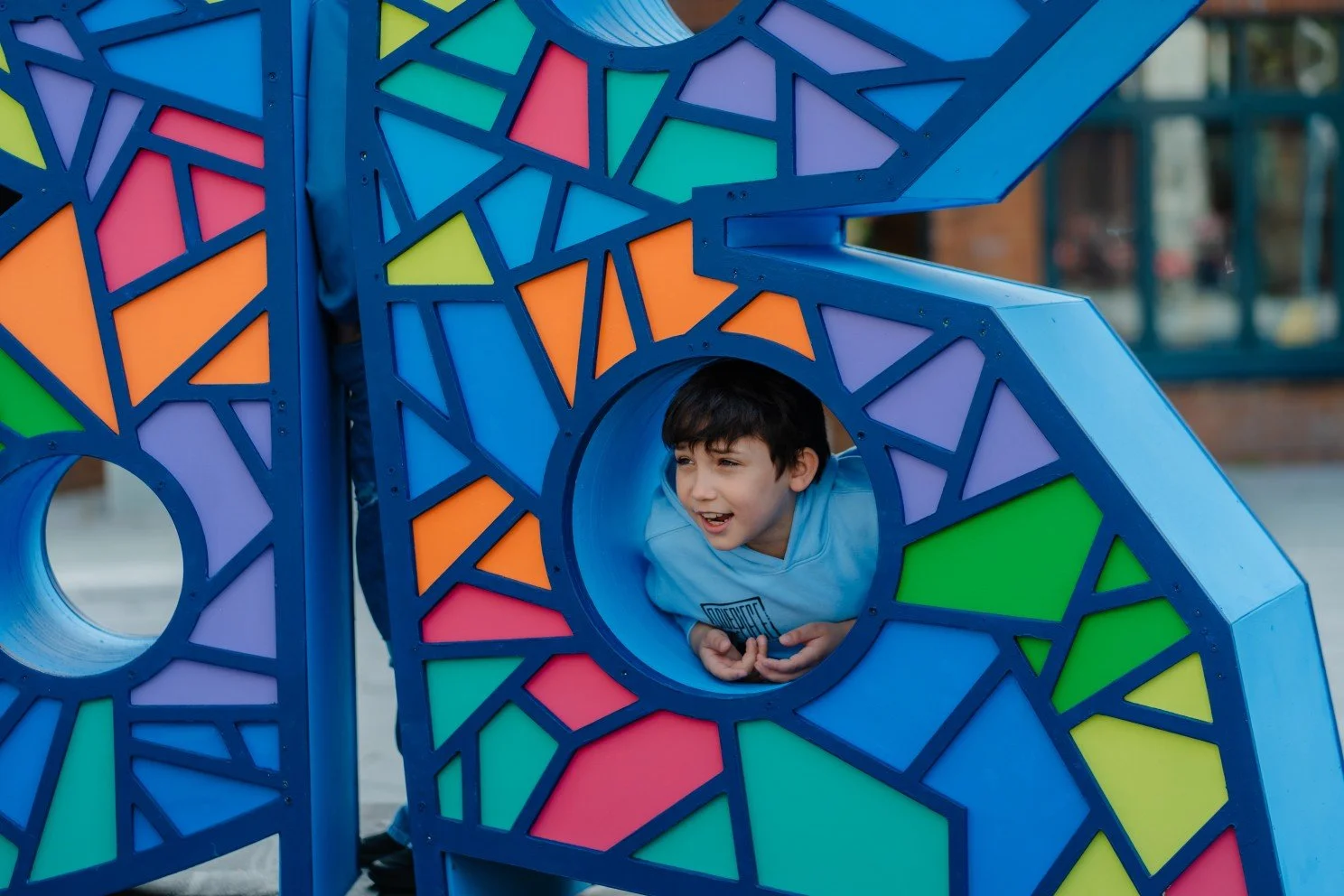8 Questions with Pavel Korbička
Pavel Korbička exploits each creative impulse down to the minutest detail, can bring his message across with the use of the most economical devices, his idiom conveying an experience of great intensity. He works with space, light, and color, employing various combinations of new and classical technologies. He manages to conjure up a state of suspense between objects and installations. Whether he displays them indoors or outdoors is of no relevance. While his sculptures may superficially appear static, they attest to a great deal of importance assigned by the artist to the element of motion. Motion, that is, which does not involve the objects themselves but rather concerns the viewers circling or entering them. With every new step, correlations between light and color transform. The artist's message thus acquires new dynamism, as the viewers perceive the composition as a whole in a different and sometimes quite unexpected way with each change of perspective.
Was there a pivotal moment that started you on your path as an artist?
I dreamed of being an artist even as a young child. But the medium of light brought me a coincidence that ended up affecting my entire life. One day, a young entrepreneur appeared in our studio at the Prague Academy of Fine Arts (1992), offering students sponsored production of neon tubes. Only I responded to this, and we still cooperate today. I mean, life isn't life without a modicum of fortune. We do not choose the environment into which we are born, nor do we choose the people whom we are fated to meet at the right time. The support of my parents, teachers, partners, or vice-versa, the interest of manufacturers, gallerists, and collectors, never came automatically. So I believe that by the way we conduct ourselves in life, we indirectly shape the conditions for what we want to occur.
What draws you to light design?
Light relates to the essence of life itself. It is mainly energy that pulls us together, and yet can influence our emotions, inspire us to feel safe, or contrarily, evoke uncertainty. It is no coincidence in my native Czech language, the etymological closeness of the words "light" and "world" ("světlo" and "svět") suggests that thanks to the light, we can see the world around us. We perceive light by basic physical receptors, especially our vision, thanks to which we spatially orient ourselves. However, the aesthetics of light are not what primarily attracts me, but rather the possibility of modeling the space around us with light, thus transforming the behavior of a person entering it.
How would you describe your development as an artist and the way you have transitioned towards your creative style?
Were I to assess my development lately, it would appear to be minimal. In the long term, however, I think it has been significant. I feel that I'm still doing the same thing, but the longer I find myself in the process, the more versed I am in the context and the possible essence. There is no need to fit into current, time-limited themes to be contemporary. I am always starting over, and do not feel like I have got it made and won the game. We learn throughout life.
Pavel Korbička, Headlights No.3, 2006, galvanized sheets, neons 201x170x210cm
You said the motion does not involve the objects themselves but rather concerns the viewers circling or entering them. Could you illuminate our readers on this?
I focus in particular on monumental, illuminated, site-specific installations into which viewers can enter. These labyrinth-like corridors utilize the optical properties of manufactured polycarbonate molded always based on the specifics of the selected space. The active movement of a viewer entering otherwise static structures causes a play of dynamic lighting effects on the walls. It is though they attack our senses and orientation skills, and travel along with us inside the structure until we leave it. For some, the richly colored, dynamically pulsating spots may arouse interest in the interactive play, whereas, in others, it may evoke states of physical imbalance. The dimensional image seen is the result of the synthesis of stereoscopic vision inherent in each of us. Due to the interior curvature of these structures and their narrowing that denies distance, the ability of this synthesis of both perspectives is distorted or completely blocked. Thanks to different physical or mental dispositions, visitors inside my installations experience their own, and therefore unique, a story.
Could you tell our readers about your relationship with the new technologies and the impact they have on developing your creativity?
I am surely interested in and much appreciate new technologies. Still, it is meanwhile essential not to give in to them to the extent that we lose the capacity for critical reflection. Although they are the work of often brilliant individuals worthy of tribute, they contain the insurmountable limits of the human being. New technologies are a great tool e.g., for precise processing of the selected problematic, thanks to which we can achieve great knowledge, but they do not render us more perfect. I neither think via technologies nor create works typical for them, but I do seek out the existence of those technologies that will allow me to implement intended concepts.
Let's say you have a new exhibition coming up. What does your process look like – from selecting the material to preparing for, exploring the space, and then opening the show?
A thorough analysis of a selected area precedes site-specific exhibitions. Each space includes hidden "rules" and meanings that always somehow define it inside. If we activate its imaginary focus, the resonance of the space or synergy occurs with the object of activation. The difficulty of the exhibition depends on the size and nature of the space, while its installation is the result of enormous effort, and culminating in the vernissage. But the artist's obligations do not end there; the exhibition should then be properly documented.
Pavel Korbička, Headlights, 2006, galvanized sheets, neons 201x170x210cm
What obstacles do you face in making and exhibiting your work?
The worst is when a neon light somehow breaks at the last minute during the installation, or when I wind up with an amateurish installation crew. Other obstacles include expensive freight transportation or being banned from anchoring elements into a wall, which in some cases, unavoidable. But the saddest thing is dismantling the unique exhibitions. Therefore, I appreciate all the people who dare to let me create them something both tailored and permanent.
Today, the world is facing the pandemic COVID-19. What is a typical day like for you? How do you continue doing your art under these circumstances?
The world has turned upside down. Though the Czech Republic succeeded through an early reaction in stabilizing the Coronavirus situation here, elsewhere, it is still, unfortunately, very tragic. We have to help one another, but especially the elderly, and keep the faith.
I was a bit lucky because just before the pandemic, I had received a creative scholarship from the Pollock-Krasner Foundation. Every day now, I am in a somewhat more relaxed mode. I try not to succumb to moods and just work on new projects, the Berlin catalog, or archiving my work. Instead of exhibiting, I now present myself in art magazines because the galleries are closed, and people are reading more. These days seem to constitute a watershed moment. We have stopped and had now had time to ponder true values. Some fervently pursue which is becoming lost forever; others, like Lot in the Book of Genesis, are searching for a new horizon that is emerging from the mists of uncertainty. I recommend the latter.
Who is Pavel Korbicka in three words?
Artist, docent, humanist.






















